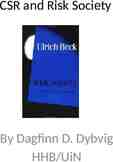Coding of Seizures and Epilepsy Gregory L. Barkley, MD Vice
11 Slides81.00 KB

Coding of Seizures and Epilepsy Gregory L. Barkley, MD Vice President National Association of Epilepsy Centers

Seizure- 780.39 A seizure is a paroxysmal behavioral spell generally caused by an excessive disorderly discharge of cortical nerve cells Epileptic seizures range from clinically undetectable (“electrographic seizures”) to convulsions. The symptoms vary depending upon the part of the brain involved in the epileptic discharge Most seizures last for about 1 minute

Epilepsy -345 Epilepsy is a syndrome of two or more unprovoked or recurrent seizures on more than one occasion Epileptic syndromes are characterized by: – The behavior during the seizure(s) (semiology) – The age of onset – Etiology, if known – EEG characteristics of the seizure type(s)

Intractability Fifth digit subclassification – 0 without mention of intractable epilepsy – 1 with intractable epilepsy pharmacoresistant (pharmacologically resistant) treatment resistant refractory (medically or surgically) poorly controlled breakthrough exacerbation of seizures

Recurrent Seizures 345.X1 Term is used to indicate a patient with epilepsy who had previously controlled seizures who has had a return of seizures or that the rate of seizures has increased in that patient Some physicians, especially emergency physicians substitute the term “exacerbation of seizures” by analogy to asthma coding

Breakthrough Seizure – 345.X1 This term is given to patients with epilepsy who have not had a seizure for a long interval and then had another seizure Synonym to recurrent seizure – Implied by usage is that the patient has had epileptic seizures previously, thus recurrent seizures or epilepsy

Repetitive Seizures – 780.39 This term is given when a patient has several seizures in a short period of time In a patient without a history of epilepsy, the most common cause is acute symptomatic seizures as a response to a central nervous system derangement – Acute stroke, acute head injury, acute alcohol withdrawal Repetitive seizures could occur in patients with epilepsy, in which case, the code would be 345.x1

Non-Epileptic Seizures I There are many paroxysmal behavioral spells that resemble epileptic seizures. Sometimes impossible to distinguish from epileptic seizures without video EEG monitoring

Non-Epileptic Seizures II Many causes Cardiac – syncope, dysrrhythmias Endocrine – hypoglycemia Sleep disorders – Sleep apnea, REM behavior disorder Neurologic – tics, myoclonus, frontotemporal dementia Psychologic – panic attacks, autistic behaviors, etc.

Non-Epileptic Seizures III We propose to add the index terms under Seizures – Non-epileptic – 780.39 – Psychogenic – 780.39 For psychogenic non-epileptic seizures – We propose that a secondary psychiatric diagnostic code be used

Acute Symptomatic Seizures vs. Late onset Epilepsy Early seizures after acute brain derangement are symptomatic of the disturbance of brain function and do not predict the later development of epilepsy – Trauma, stroke, encephalitis, alcohol withdrawal Seizures beginning weeks to years later represent the development of epilepsy as a late effect and coded as such, 907.0, 438.9, 139.0






